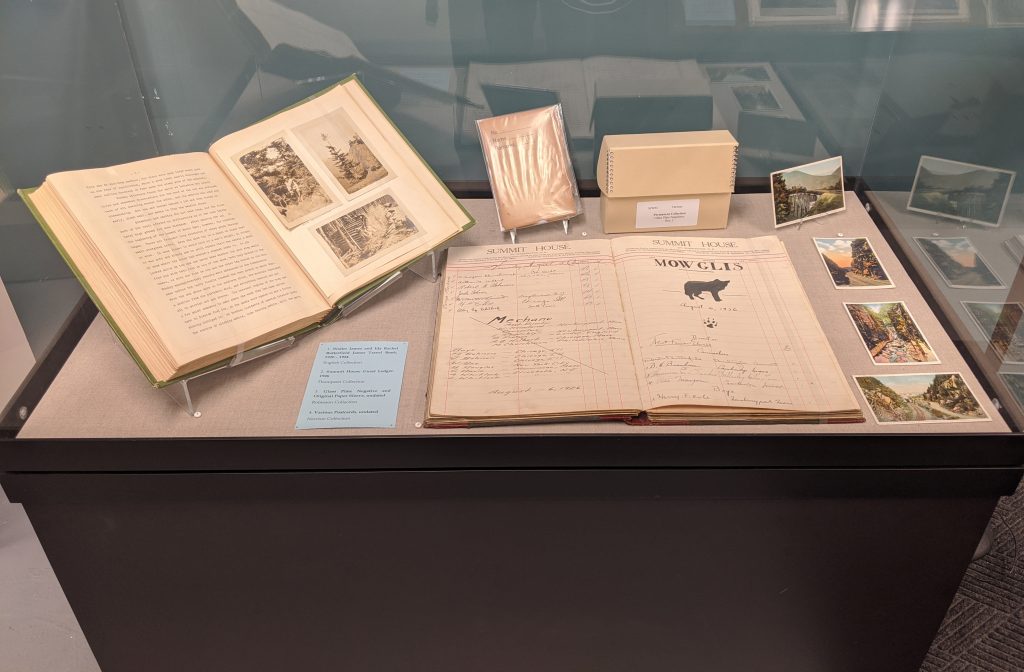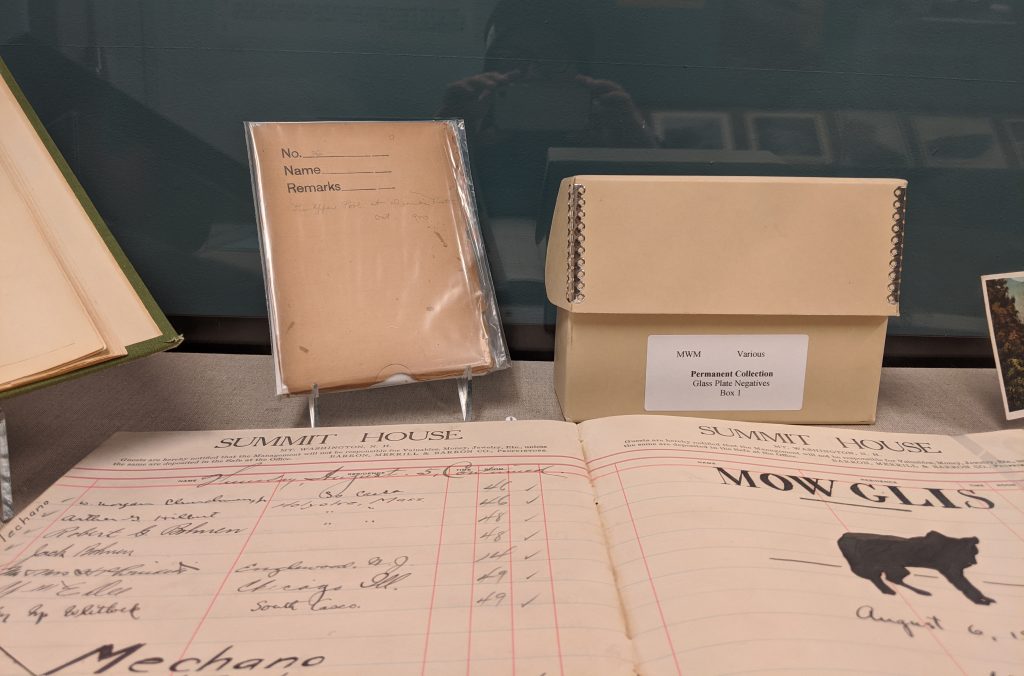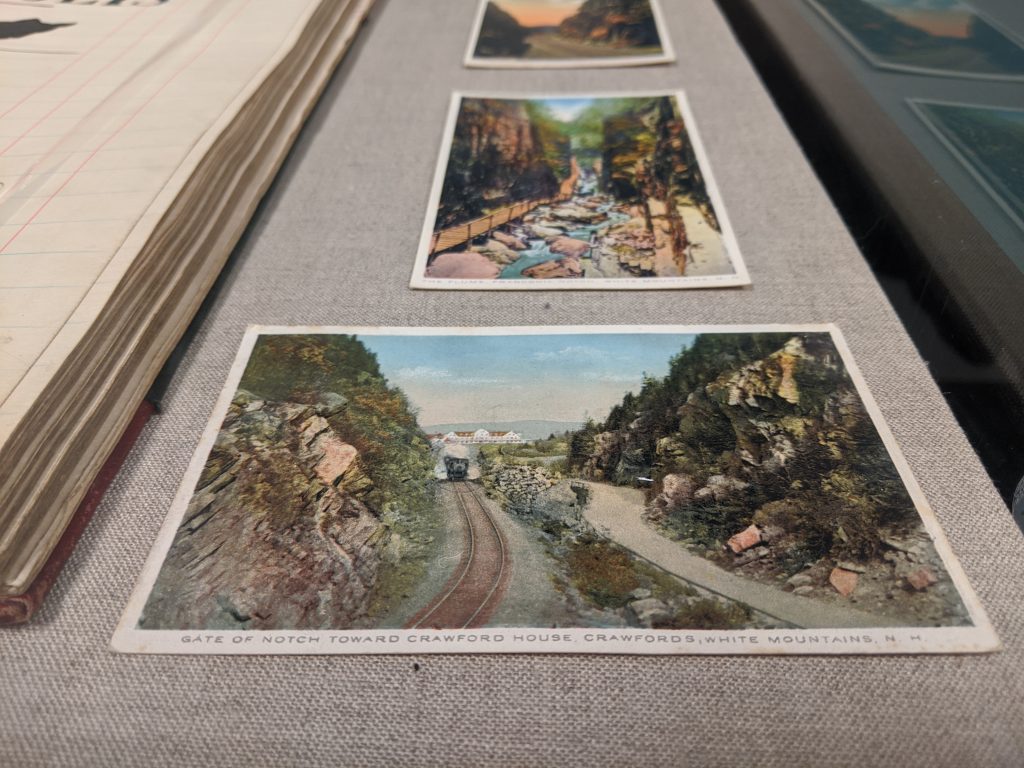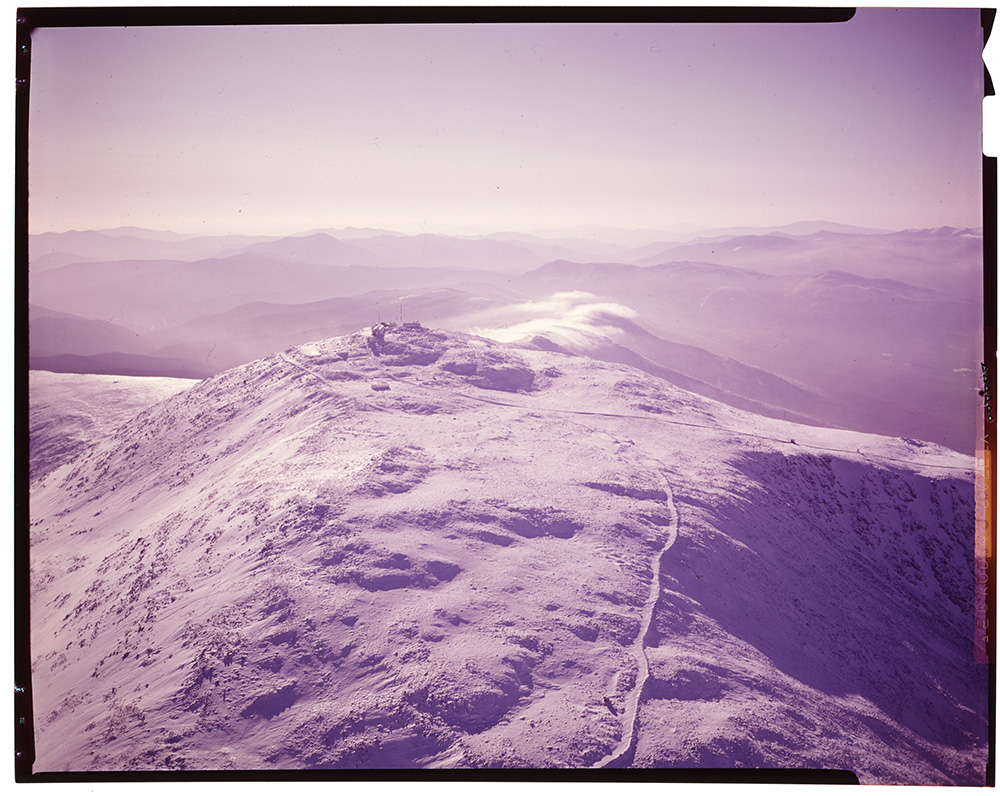The Museum of the White Mountains invites you to peek into the Museum’s permanent collection, from the 2010 founding collection of Dan Noel, to today. Celebrate our dedicated White Mountain collectors and enjoy a selection of treasures from their unique and significant donations. Discover the types of items that make up the Museum’s collection, learn the terminology, and see how we are working to preserve and share these archival and digital learning resources with students, researchers, and the public.


Close Ups
Use arrows to scroll through slideshow. Click to see full image.
Did you know? The word “ephemera” is often used to describe collection materials. According to dictionary.com, the definition of ephemera is:
“Items of collectible memorabilia, typically written or printed ones, that were originally expected to have only short-term usefulness or popularity.”
Of the items from the Museum collection on display here, the postcards are considered ephemera.
Shown in case:
Walter James and Ida Rachel Butterfield James Travel Book, 1920 – 1924
English Collection. Visit our digital collections page to view the fully digitized travel books from this donation.
Summit House Guest Ledger, 1926
Thompson Collection
Glass Plate Negative and Original Paper Sleeve, undated
Robinson Collection
Various Postcards, undated
Newton Collection
Hamilton Collection (Shown on Rail)
Visit our Digital Collections page to see more photographs from this collection. digitalcollections.plymouth.edu
Click to see full image.
Images of (L-R): Profile House, circa 1859-1867; Chiswick Inn, circa 1880-1910; Old Man of the Mountain; Bretton Woods aerial view, summer 1916; Maplewood Hotel, circa 1890.
Noel Collection Stereoviews (Shown on Wall)
Did you know? The stereograph, otherwise known as the stereogram, stereoscope, or stereo view, was the nineteenth-century predecessor of the Polaroid.
Placed on cardboard were two almost identical photographs, side by side, to be viewed with a stereoscope. When viewed, the photograph appeared three-dimensional, an awe-inspiring illusion for anyone during that time. Stereography, from the outset, was a commercial success. It was a democratic invention because the photographs reached across class lines, and were affordable even to the poor and lower middle class.
American Antiquarian Society
https://www.americanantiquarian.org/stereographs.htm
Click to see full image.
Did you know? The type of stereo viewer shown here was invented by Oliver Wendell Holmes in 1861. It was a much more affordable and simplified version than anything that had been available before. The Holmes stereoscope remained in production for a century, and there are still some companies making them today.

Did you know? Prior to the invention of cellulose nitrate film in 1903, photographic emulsions were made on glass supports. These glass supports are typically referred to as glass plate negatives.
The Museum has a large glass plate negative collection and many of them have been digitized and are available to view online.
See more online at www.digitalcollections.plymouth.edu
Smith Collection (Shown on Slideshow)
Use arrows to scroll through slideshow. Click to see full image.
Geological Samples (Shown on Rails)
Shown here is a selection from the Museum’s complete hand-sample [hand sized] collection of all the rocks of the White Mountains. The geological samples were collected by two trained geology students from Bates College for the Museum’s 2014 Beyond Granite exhibition.
Most recently, this collection was shared with the Currier Museum for their 2016 exhibition Mount Washington: The Crown of New England.
Click on the names to learn more!

Mount Osceola Granite:
This granite was formed in a similar time period as the Conway Granite. This was a time when volcanoes stretched across the White Mountains. These granites formed as molten material cooled and hardened beneath the volcanoes. This sample is about 185 million years old.
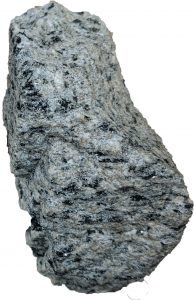
Biotite Granite:
This sample is part of a group of rocks known as the Oliverian Plutonic Suite and is about 445 million years old, one of the older rocks found in New Hampshire. This biotite granite contains small black grains which are mineral biotite, a type of mica.

Breccia:
Sample belongs to a group of rocks known as the Moat Volcanics. Breccia rocks are are well exposed in the Moat Mountains near North Conway. This breccia sample is about 170 million years old, made from ash deposits from a volcanic eruption.
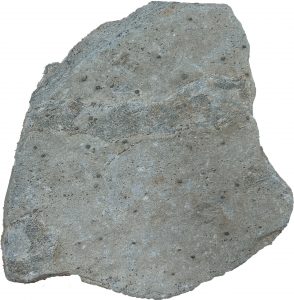
Granofels:
This granofels is a metamorphic rock which possesses a granular texture. This rock contains both small pointy grains of amphibole, and larger rounded grains of granets which stick out of the rocks face. This sample is about 420 million years old.

Schist:
This sample is part of the group of rocks known as the Smalls Falls Formation. This rock obtains its name from the fact that it contains minerals like pyrite which are made of iron sulfide. When oxygen attacks these minerals, it turns them into iron oxide which is rust. This sample is about 420 million years old.
Collections Featured in this Exhibition (click the titles to read more):
NOEL COLLECTION
The Dan Noel Collection is the Founding Collection of the Museum of the White Mountains. In 2010, the late Daniel Noel, a life-long state resident, White Mountains photographer, and collector, gave PSU his lifetime collection of White Mountains related materials. The collection includes thousands of archival materials and images, including rare glass-plate photographs, stereoscopic images, hotel ledgers, postcards, early and first edition books about the region, bird’s-eye views and maps, framed Bartlett prints, paintings, and other significant White Mountains ephemera.
SMITH COLLECTION
The Smith Collection was donated by Barbara Smith, the widow of the celebrated White Mountains photographer, Richard “Dick” Smith (1927 – 2006), the Smith Collection includes some interesting manuscript materials, several oversized prints, and nearly 200 transparencies and negatives, all taken by Dick Smith during the mid to late-twentieth century.
NEWTON COLLECTION
In 2012, John W. (Jack) and Anne H. Newton of South Natick, Massachusetts, gave their 6,000 volume collection of White Mountains related books, maps, and historical materials to the MWM. It includes complete or almost complete collections of various White Mountains-related publications including: Appalachia Journal, Appalachian Mountain Club Bulletin, Mount Washington Observatory Bulletin, New Hampshire Troubadour, and New Hampshire Profiles Magazine, the AMC White Mountain Guide, as well as many early and first edition books, pamphlets, trail guides, and other ephemera related to the White Mountains.
MACINTYRE COLLECTION
In 2012, Frances “Dolly” MacIntyre of Florida donated 18 works of White Mountain art painted by female artists in the 19th and 20th century to the MWM. MacIntyre gathered these works while writing her thesis, ”Women Artists in the White Mountains, 1840-1940.” Works from this collection were most recently displayed in the MWM’s exhibition Taking the Lead: Women and the White Mountains.
ENGLISH COLLECTION
In 2014, the English family donated six journals written by Walter H. James, Ida Rachel James, and L. Ardena Butterfield between 1899-1926. The journals contain firsthand accounts of their camping, packing, and tramping trips across New England and the White Mountains, as well as hundreds of vintage monochrome photographs, maps, and other illustrations. In 2005, Ben English, Jr. and Jane English published the journals as Our Mountain Trips.
BARBA COLLECTION
In 2018, Stephen Barba donated his personal collection of memorabilia and related materials gathered from Barba’s 48 year career spent at The BALSAMS Grand Resort Hotel, in Dixville Notch, NH. Items include postcards, brochures, stereoviews, books, notebooks, art, photographs, china, and other ephemera related to The BALSAMS, the White Mountains, and New Hampshire.
HAMILTON COLLECTION
In 2019, Richard “Dick” Hamilton donated a portion of his collection of photographs, stereoviews, advertising brochures and booklets, articles, menus, correspondence, and other ephemera related to the hotels of the White Mountain region.
Hamilton began his career at age 13 as the bellhop at the Eastern Slope Inn; he later became the Executive Director of White Mountain Attractions and was one of the original founders of the New Hampshire Travel Council.
ROBINSON COLLECTION
In 2013, David Robinson donated five 5 x 7 inch glass plate negatives of White Mountain subjects, dated circa 1900.
THOMPSON COLLECTION
In 2019, Woodrow and Louise Thompson donated two Summit House hotel guest ledgers from 1926 and 1930. The ledgers contain signatures from many influential hikers and visitors to Mount Washington, as well as drawings and signatures from White Mountain summer camps, such as Camp Mowglis.








